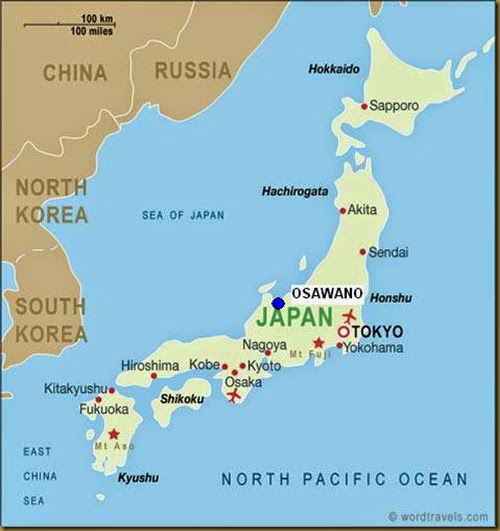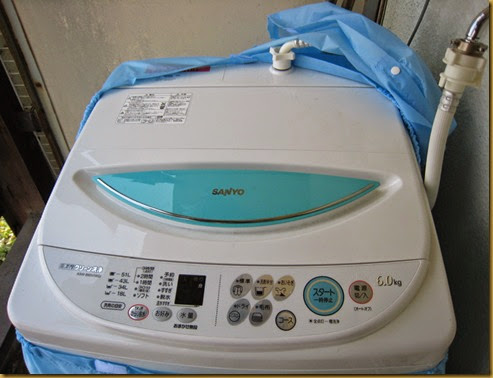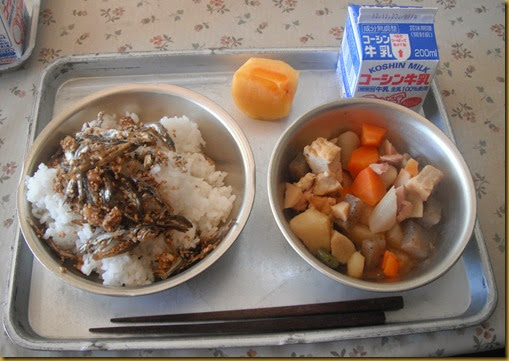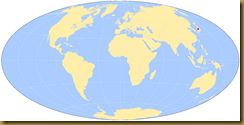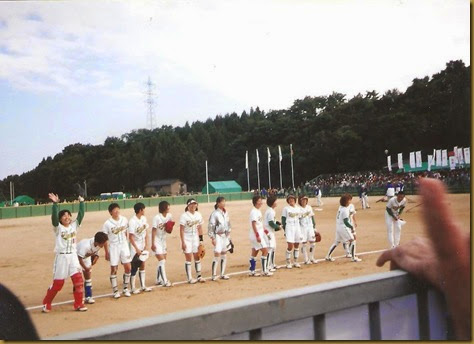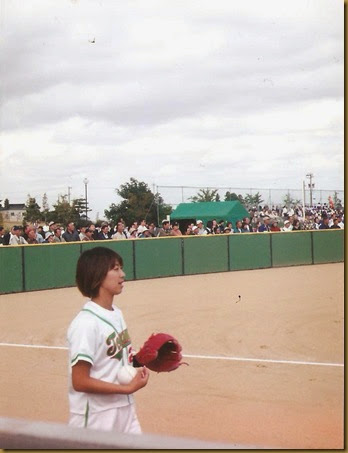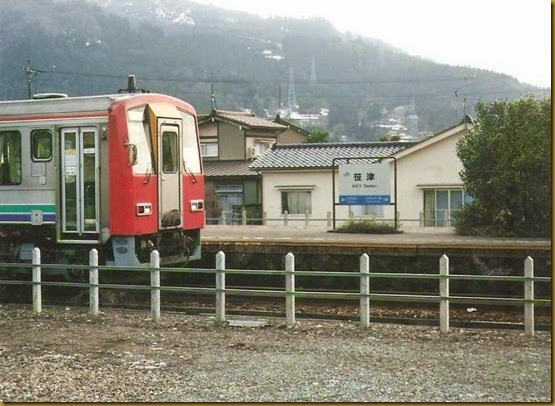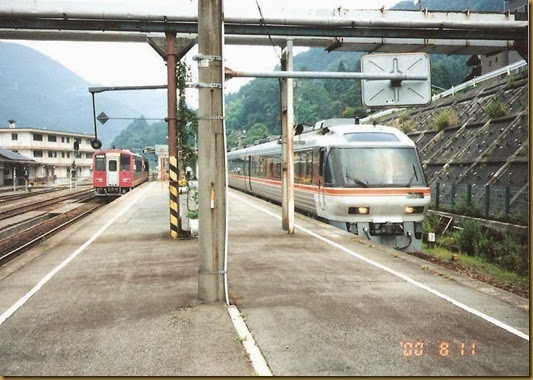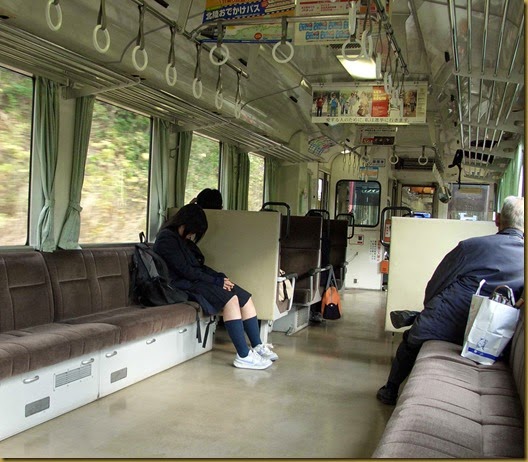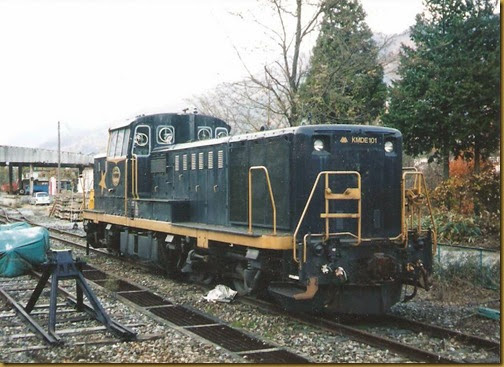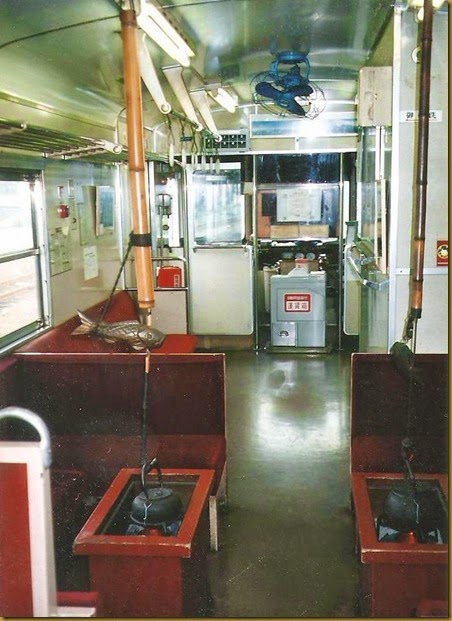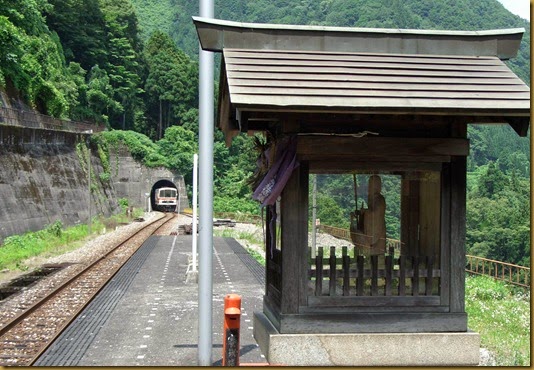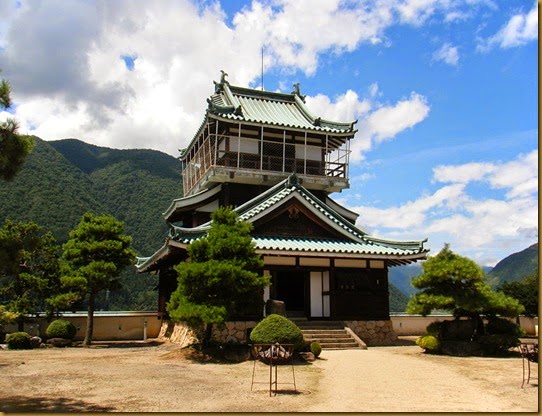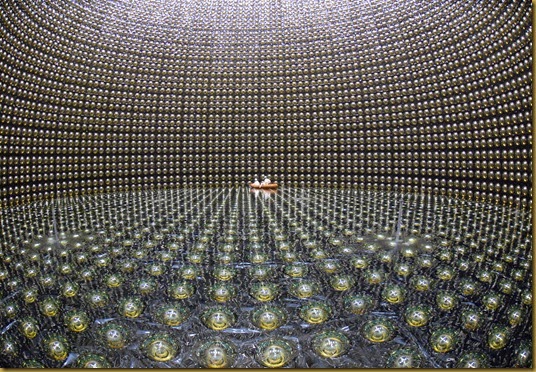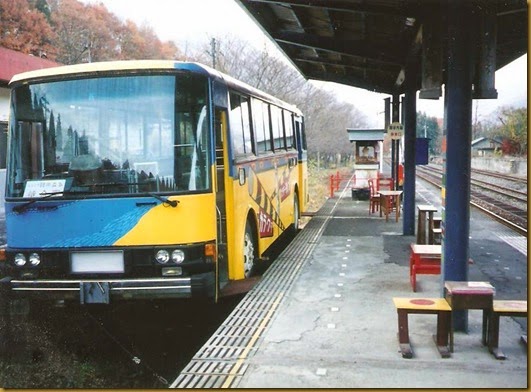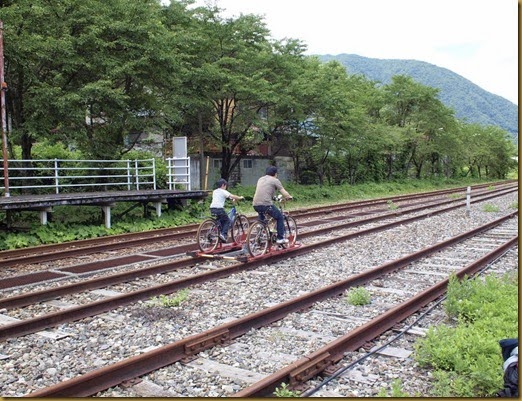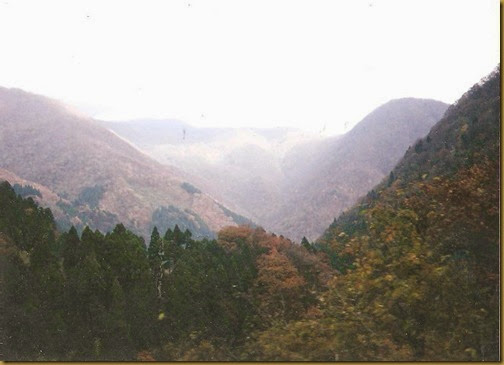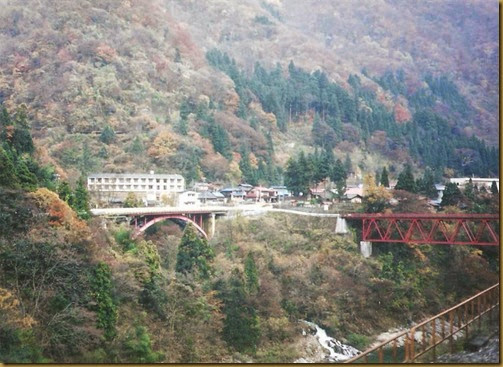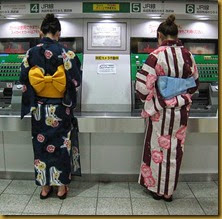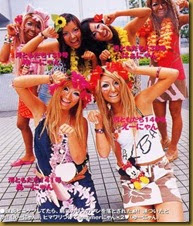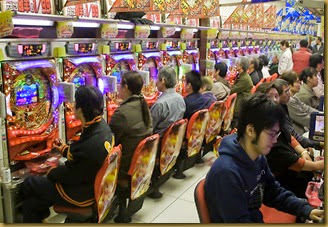Japanese Musings 2.1: Arrival Pt. 1: Tokyo
Looking back now with the benefit of over ten years more living and travels through more than three dozen more countries, I can truly say that I have only ever experienced true cultural shock on two or three occasions. Arriving in Japan was one of them. Several years afterwards, I watched Sophie Coppola’s excellent film ‘Lost in Translation’ which charts the exploits of Bob Harris (Bill Murray as he arrives in Tokyo for the shooting of a Suntory Whisky ad. He is jet-lagged and he stays in a tower block in Shinjuku and it is all rather weird. Perhaps after you’ve read this piece, you’ll understand how I can relate to that film so well. Alas, unlike with Bill in the film, Scarlett Johansson never turned up to keep me company.
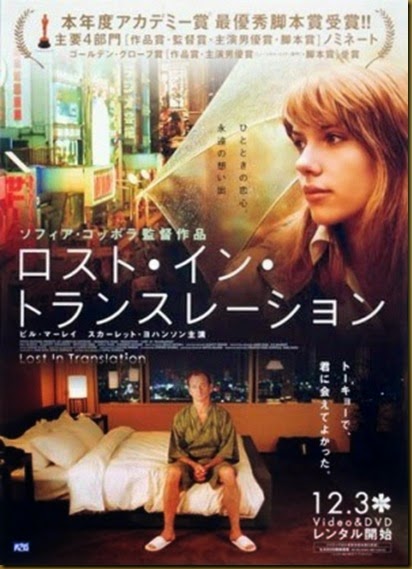 Lost in Translation
Lost in Translation
To be fair, it was perhaps always going to be a bit of a weird time. The year before had been traumatic, one of the most eventful of my life. My father had been killed in a tragic accident, I’d lived with and fallen in love with a girl who’d then decided to get married to someone else, I’d had my university finals and I’d tried to cope with it all by writing my first novel. All of that was enough to put anyone in a strange mood and the chaos only intensified in the week’s leading up to my departure for Japan as my diary shows:
‘The weeks, (or indeed months), preceding my departure to Japan were definitely amongst the strangest of my existence. Not that anything particularly out of the ordinary happened I must hasten to add, but more that they were characterised by a strange sort of transitory feeling of a life in limbo. You have finished one life and you are waiting for the next one to commence. In the meantime you have time to fill, thus visits to certain faces and places from previous lives are made. During the run up to Japan I certainly got about a bit as they say. There was a visits to Scotland and London to see friends, a quick sojurn to the Netherlands to seek the wisdom of the Lowlander, a student party in Sheffield, a grad ball in Leeds, a Graduation Ceremony, (someone else’s…), a sing-song with St. Margaret’s Church Choir, a curry or two at Roshni Indian Cuisine, a trip to Burton with Uncle Doug and many nights in the Butchers Arms culminating in a goodbye gathering. Thus, after saying goodbye to all and sundry, I departed Stoke station for London Euston from whence I travelled to Northolt on the tube and stayed the night in the company of Pepi Mincheva and her compatriots, (most notably a rather attractive hairdresser from Sofia), in the suburbs of London.’
And then I was on the plane. Previously my longest flight had been around four hours, and I’d always travelled economy, usually on package tourist airlines. But the JET Scheme was not only paying BA, they were doing it business class and the flight, on the top deck of a 747, was twelve hours long. I sat next to a Sri Lankan dentist, watched ‘American Beauty’ and the ‘Man in the Iron Mask’, wrote a letter to a friend, read ‘Les Miserables’, ate a lot, drank a little and slept even less. Half a day later we landed at Narita, the calendar having moved forward a day yet it never having got dark.
Tokyo Narita is a large airport much like any other large airport, the only point of note being that its trolleys could travel up and down the escalators. All the new JET teachers were herded together onto a coach and then sent into the Japanese capital. Here was where the culture shock started and here is how I described it in my diary: ‘Whilst Tokyo seems to have few buildings with any architectural merit, its sheer size is overwhelming; it makes London look like a provincial city! Crossed over several large bridges, saw a Japanese equivalent of the London Eye and also of the Eiffel Tower. Saw the Tokyo Disneyland and lots of skyscrapers.’ And at the end of it all was the Keio Plaza Hotel in Shinjuku, a five star, one thousand five hundred rooms, forty-odd storey sleeping factory. And so, despite it only being early in the afternoon, that’s what I did: slept.
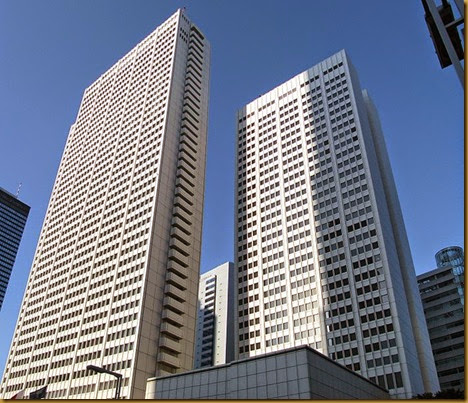 The Keio Plaza Hotel: not exactly personal
The Keio Plaza Hotel: not exactly personal
The problem with sleeping during the day is that you tend to wake up at night. If there’s one thing I can relate to more than anything else in ‘Lost in Translation’, it’s the insomnia, wandering around a monolithic, largely beige-coloured hotel in the small hours, watching weird TV and striking up friendships with other, similarly affected individuals. That and the sexual tension.
Unlike Bill Murray, who is a world famous movie star, us JETsetters were billeted in rooms of three, and I found myself sharing with two other guys. One of them was John and John was in the initial throws of a relationship with Chris and Chris, like Scarlett Johansson, was insanely hot. Therefore it is entirely understandable that John, whilst being a great guy and Chris, whilst being a great girl, did not really want me in the room. Things weren’t easy for me either, and whenever things aren’t easy, I get out. So it was that I went for a wander around Shinjuku as the sun was beginning to set in the land where it really should be rising.
Shinjuku Station: the world’s busiest… and possibly also the most surreal…
Shinjuku is culture shock. Tokyo is a mad, crazy city, but Shinjuku is Tokyo on heat. Incredible skyscrapers above whilst at ground level a cacophony of sound and light. Pachinko parlours with their thousands of rattling balls,
1 flashing neon signs, ganguro girls dolled and tanned up to high heaven
2 and a selection of the weirdest food imaginable, all in a language that I could barely read my own name in. I wandered around sucking it all in, my head whirling as salarymen brushed past on their way home from a day in the office, ready to catch their trains at the world’s busiest railway station.
Ganguro girls and pachinko
That evening we went out, John, Chris and I along with a few others. We headed for an Irish pub halfway up a tower block where it was a mind-boggling 850 yen for a pint,
3 meaning that we only downed three before making our way back to the hotel and stopping off for some strange beef noodles en route which I struggled to eat as I was not yet proficient with the chopsticks.
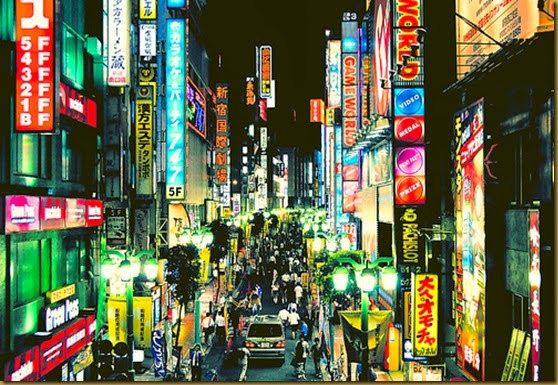 Shinjuku by night
Shinjuku by night
The next morning I was up early and after a fine hotel breakfast, it was a heady dose of speeches and seminars. I was later to learn just how much the Japanese love speeches whenever welcoming or saying goodbye and most follow the same pattern. Whatever the case, half asleep as I was, (in my diary I describe it as ‘JETlagged’ – Ha! Ha!), not much went in and soon afterwards it was back to bed where I slept for most of the rest of the day. That evening, body clock still way out, we were out again drinking and sampling the delights of our new country including the toilets. I remember vividly going to relieve myself in the bar and the guy next to me declare, “Hey dude, I didn’t expect to see you so far from Kansas!” Thinking he’d mistaken me for some Stateside friend I looked at him askance, only to discover that he was holding a conversation with the urinal which was made by a company called Toto. Apparently Toto is also the name of Dorothy’s dog in ‘The Wizard of Oz’, a dog that, unlike me or the urinal, hailed from Kansas.
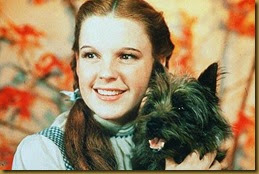
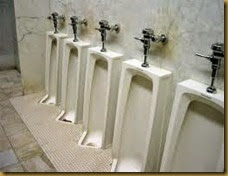
Toto: different things to different people
The day that followed was more of the same; dull lectures in beige rooms. Eventually, I decided not to bother and so went off to explore Shinjuku, discovering a passage under most of the district filled with people and a tiny shrine in amongst all the skyscrapers that looked almost unchanged since the 7th century. After that, I again slept ready for the evening which started off with a reception party at the British Embassy.
The Ambassador’s Receptions are always, as the Ferrero Roche adverts tell us, marvellous affairs, and having attended them in both Japan and Vietnam, I am suitably impressed. However, of the two embassies, the Tokyo one wins hands down if only for location. Situated adjacent to the Emperor’s Palace it is a glorious mansion that speaks of the British Empire at its height. Indeed, it’s location is due purely to that factor; it was built right next to the Emperor’s Palace so as to discourage the British from sailing up to the city and bombarding said palace in times of disagreement, just as they had done in Peking. Not that I knew that at the time; instead I, along with all the other young British JETters were just star struck by the opulent location, expensive free food and lashings of free alcohol. It was not long before the latter began to take an effect and I got into a conversation with a rather boring chap from the embassy who seemed most unimpressed when I asked him if, following the departure of Mr. Bond after ‘You Only Live Twice’, he was now ‘Our Man in Japan.’
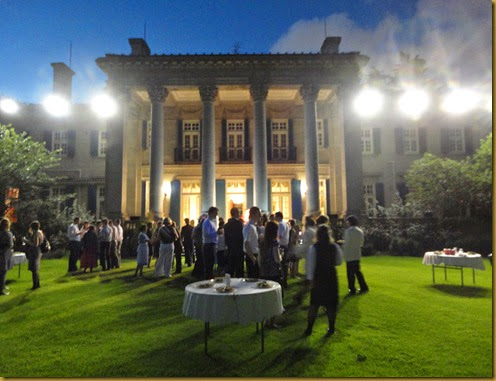 The Ambassador’s Reception, Tokyo
The Ambassador’s Reception, Tokyo
By the time the embassy party had finished it was all becoming one big surreal blur of neon lights, rows of vending machines selling every product imaginable, dark-skinned ganguro girls, mobile phones a decade ahead of the ones at home and then finally, that most Japanese of all activities, karaoke.
Most people say that you have to be drunk to enjoy karaoke. I do not, although I did before hitting Nippon. Time in Japan teaches a man that karaoke is a perfectly reasonable way to spend a sober weekday evening. But that was a lesson that I hadn’t learnt by then and so instead it was the karaoke that I’d practised out in Corfu that ruled the day then, plastered renditions of Beatles and Monkees classics surrounded by other drunks, (well, the British were all drunk; the Americans who hadn’t had a reception were still warming up), before finally staggering home via a snack bar that sold some weird beef with rice concoction, unsure of the unreal that we were in but loving every minute of it.
But what goes up must come down and the following morning was one of the worst that I have ever experienced. Another lesson in life learnt: Japanese hangovers are worse than British ones.[4] We all lumbered onto our coach to Haneda, Tokyo’s other airport, nursing sore heads and unsettled stomachs. No romantic, deep and meaningful hugs in a Shinjuku street for me I’m afraid, although perhaps if I return as a grumpy fifty-year old, then maybe I too will receive the Bill Murray treatment. But that is for the future and here I end Part 1 of my account of my arrival in the Land of the Rising Sun, for after alighting from our coach and checking through departures, we entered an All Nippon Airways jet which would take us onwards to the next stage of our journey, away from the monkey-brain sushi surrealism of the mammoth metropolis of Tokyo with its subcultures, subterranean shopping centres and sky-scraping hotels and instead into a very different Japan, the quiet of Toyama-ken, a place summed up in one word: inaka.
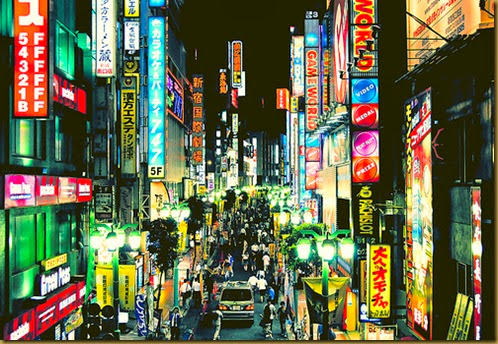 Shinjuku: Japan Max!
Shinjuku: Japan Max!
1 Pachinko is a mechanical game originating in Japan and is used as both a form of recreational arcade game and much more frequently as a gambling device, filling a Japanese gambling niche comparable to that of the slot machine in Western gaming. A pachinko machine resembles a vertical pinball machine, but has no flippers and uses a large number of small balls. The player fires balls into the machine, which then cascade down through a dense forest of pins. If the balls go into certain locations, they may be captured and sequences of events may be triggered that result in more balls being released. The object of the game is to capture as many balls as possible. These balls can then be exchanged for prizes. Pachinko machines were originally strictly mechanical, but modern ones have incorporated extensive electronics, becoming similar to video slot machines.
2 Ganguro is a Japanese subculture. It is defined by Wikipedia as follows: ‘Ganguro appeared as a new fashion style in Japan in the early 1990s and was prevalent mostly among young women. In ganguro fashion, a deep tan is combined with hair dyed in shades of orange to blonde, or a silver grey known as "high bleached". Black ink is used as eye-liner and white concealer is used as lipstick and eyeshadow. False eyelashes, plastic facial gems, and pearl powder are often added to this. Platform shoes and brightly coloured outfits complete the ganguro look. Also typical of ganguro fashion are tie-dyed sarongs, miniskirts, stickers on the face, and many bracelets, rings, and necklaces.’
Ganguro falls into the larger subculture of gyaru (from English "girl"), a slang term used for various groups of young women, usually referring to overly childish women. Researchers in the field of Japanese studies believe that ganguro is a form of revenge against traditional Japanese society due to resentment of neglect, isolation, and constraint of Japanese society. This is their attempt at individuality, self-expression, and freedom, in open defiance of school standards and regulations.
3 Approximately £5. The going rate for a pint in the UK at the time was around £1.80 outside of London and perhaps £2 in the expensive bars of the capital.
4 Despite extensive research, I never definitively worked out why, although lots of preservatives in the beer, beer brewed from rice, not wheat, mixing drinks and the summer heat all seem to be factors.
Technorati Tags:
uncle travelling matt,
travel,
blog,
japan,
toto,
british embassy,
amabassador's reception,
japanese musings,
tokyo,
shinjuku,
ganguro,
pachinko,
karaoke,
keio plaza,
JET,
ALT,
lost in translation,
scarlett johansen,
bill murray,
drinking,
alcohol,
haneda,
narita

